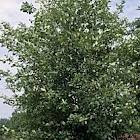This Astragalus herb has been used in traditional Chinese medicine for centuries, sometimes alone and sometimes mixed with other herbs. It is a member of the Fabaceae or Leguminoseae family of plants, or the pea or bean family. Its relatives include carob, the butterfly pea, broom. amaltas, laburnum, and a whole host of other plants. It is also closely related to the plant that produces gum Tragacanth or gond katira.
It is native to north and eastern China , Mongolia and Korea . However you can plant it indoors or in your garden too. The root is used mainly for medicine, and this is usually harvested from a four-year-old plant and dried for later use. It grows to between 16 and 36 inches high.
 In
In 
It seems that it may be effective against atherosclerosis, hypertension, hyperthyroidism, insomnia, diabetes, chronic hepatitis, genital herpes, AIDS and chemotherapy side effects. However studies are in their preliminary stages and more needs to be done before there is conclusive evidence of the roots’ benefits.
The sliced root may be added to soups and stews, you can slice 2 to 4 roots and add them to a soup as they will enhance the flavor and add their health benefits, which include relieving stress, whether emotional, physical or mental. However you should fish them out before serving the soup.
 Astragalus membranaceus is also called A. propinquus, and is beneficial for helping to prevent colds and respiratory diseases such as bronchitis, as it boosts the immune system. It has antioxidant properties so can help combat the free-radical scavengers which can damage healthy cells and cause cancer. Because of its antioxidant properties it may also help to prevent heart disease. Its main use may be to help restore the immune system’s natural functioning in cancer patients who have undergone or are undergoing chemotherapy or radiation therapy, as taking this herb over a prolonger period has helped cancer patients’ longevity.
Astragalus membranaceus is also called A. propinquus, and is beneficial for helping to prevent colds and respiratory diseases such as bronchitis, as it boosts the immune system. It has antioxidant properties so can help combat the free-radical scavengers which can damage healthy cells and cause cancer. Because of its antioxidant properties it may also help to prevent heart disease. Its main use may be to help restore the immune system’s natural functioning in cancer patients who have undergone or are undergoing chemotherapy or radiation therapy, as taking this herb over a prolonger period has helped cancer patients’ longevity.  So far the results of its use in HIV patients has been mixed, and it is not absolutely certain that it helps with diabetes, although it does have the ability to lower blood sugar levels.
So far the results of its use in HIV patients has been mixed, and it is not absolutely certain that it helps with diabetes, although it does have the ability to lower blood sugar levels. It has been found to have anti-bacterial and anti-viral properties and it also helps athletes combat fatigue.
The herb is taken in a decoction and is made by taking 4 tablespoons of the dried root chopped, to 4 cups of water and bringing the liquid to the boil and then allowing it to simmer gently for at least forty minutes, before straining it and drinking it.
The root is an adaptagen which means that it is believed to be able to reduce stress levels, whether they are emotional, physical or mental.




























